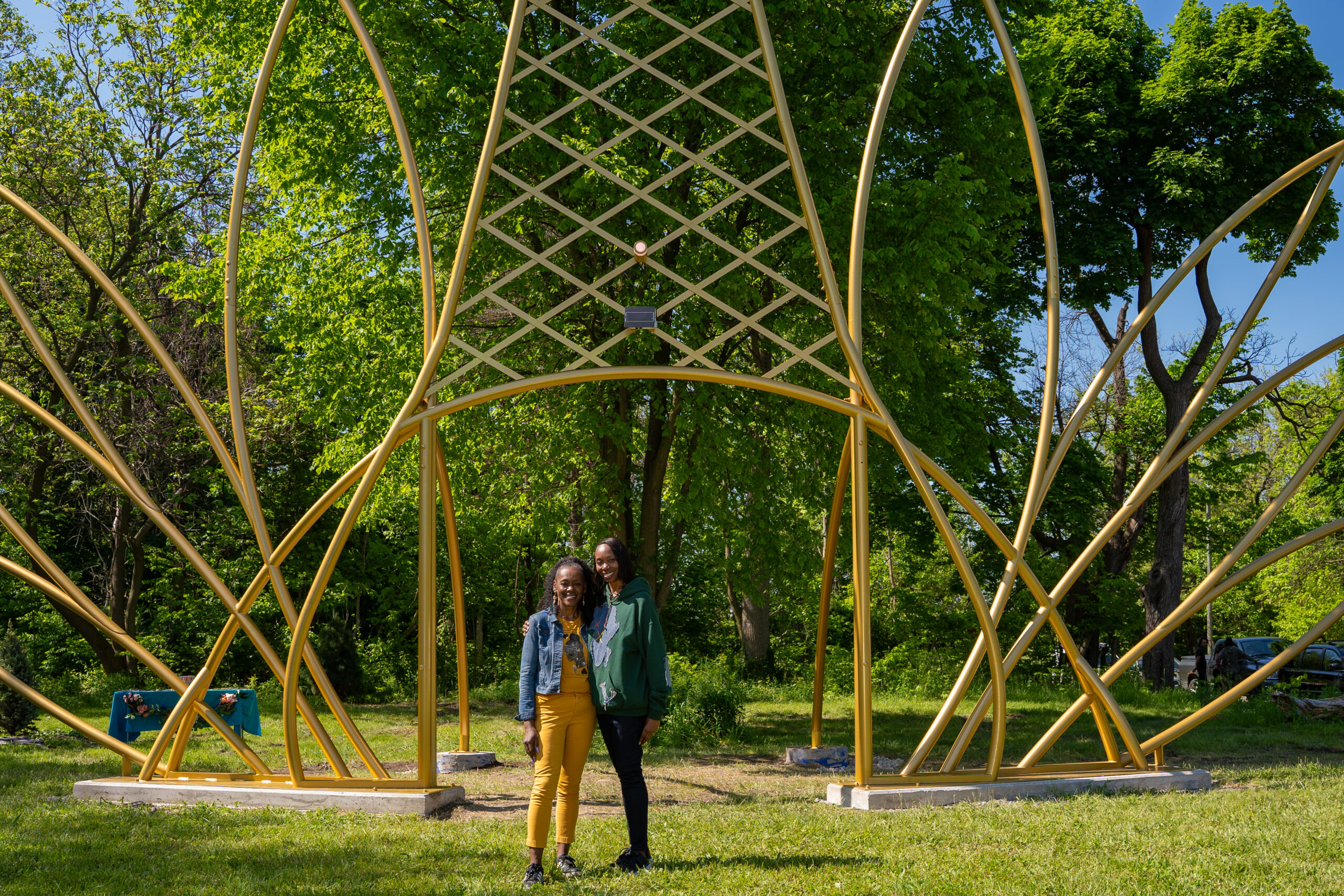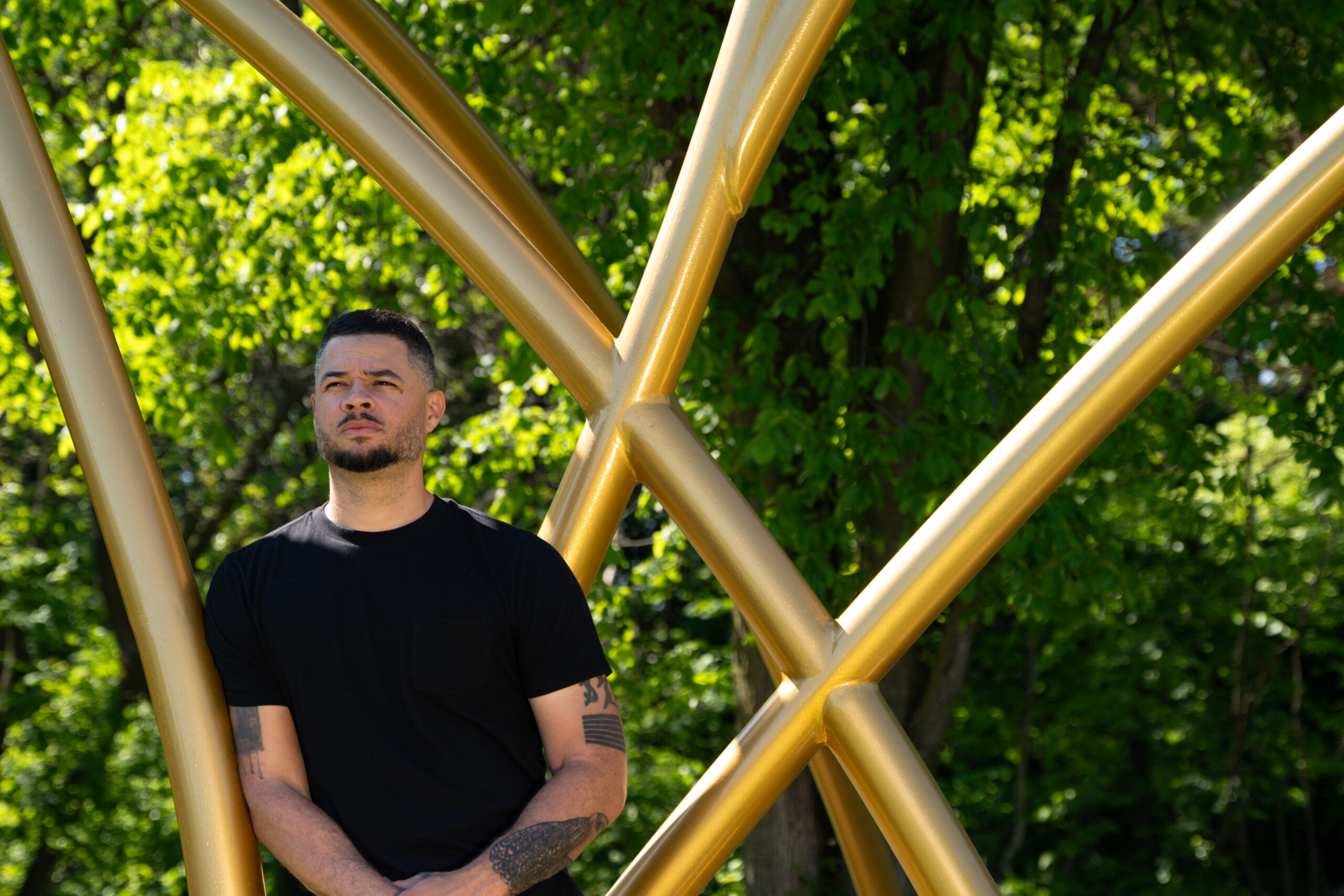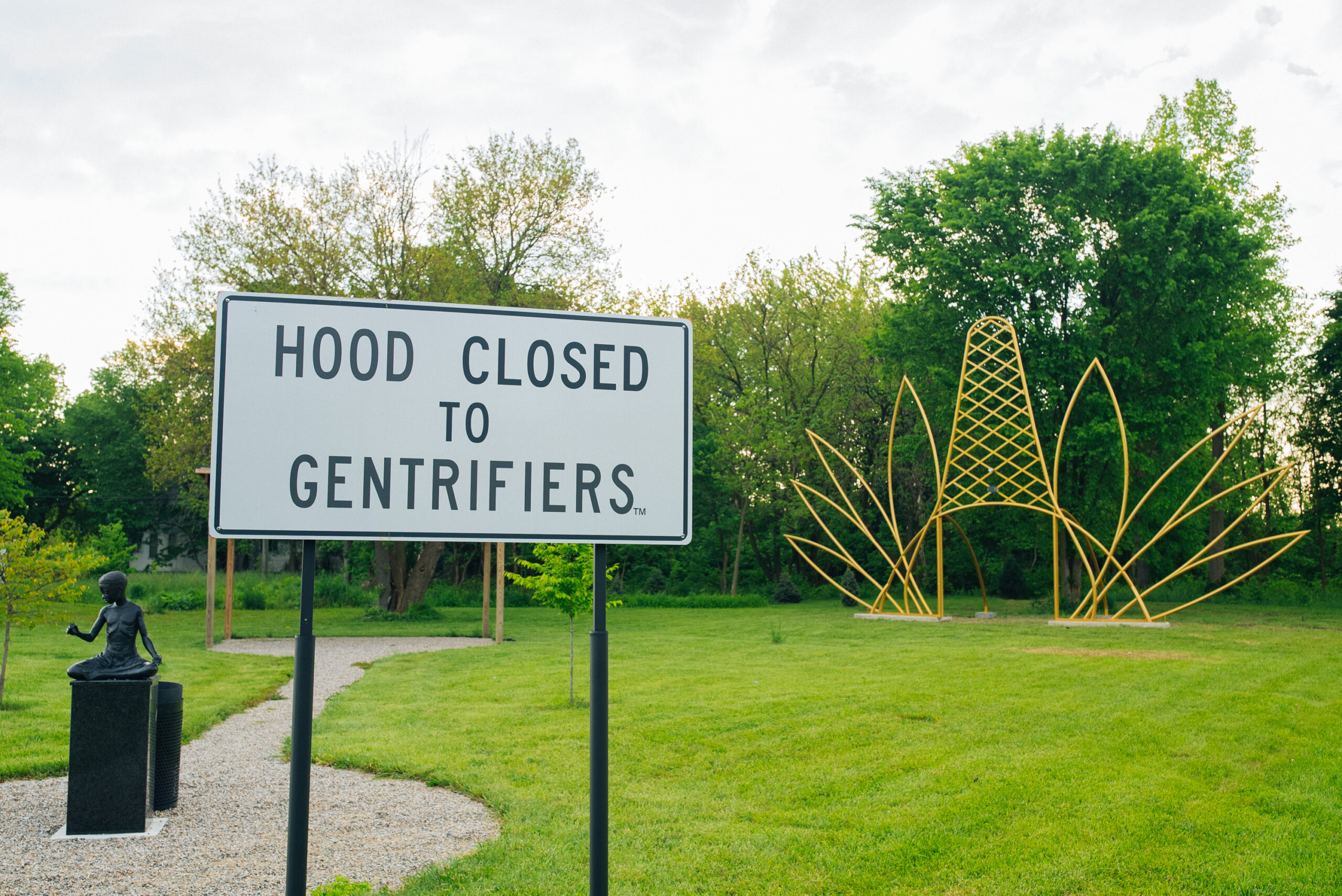A waft of what smells like fresh cut grass and burnt oil hangs in the air of Detroit’s East Canfield neighborhood. The eerie smell comes from the nearby Stellantis Mack Assembly Plant, which has received repeated air quality violations for paint and solvent odors over the last several years. In March, Stellantis agreed to pay a $84,420 fine from the Michigan Department of Environment, Great Lakes, and Energy (EGLE) for air quality violations for one of its plants in the same neighborhood. This neighborhood has one of the highest rates of asthma hospitalization of children under 18.
Despite its foreboding presence, residents like sisters Kim and Rhonda Theus are finding intentional ways to erect beauty. They run the nonprofit Canfield Consortium, which repurposes vacant lots for things like community gardens and public art. They’re even renovating a former corner store into a coffee shop and art gallery, and carving out a future bike path.

Honoring Place and People
Their latest project is the Detroit Remediation Forest, a forest bathing installation located in the East Canfield Art Park that they hope will help mitigate air pollution from the Stellantis complex. The forest is anchored by a gold sculpture called “New Forest, Ancient Thrones” by New York-based artist and activist Jordan Weber. The piece has an air quality monitor that tells residents the particulate matter levels in the air.
It’s shaped like two crowns, as an ode to Queen Idia of Benin (modern-day Nigeria) and Queen Ranavalona III of Madagascar who fought colonization. The crowns also honor Kim and Rhonda as modern-day queens.
“It’s a strong symbolic representation of the African diasporic experience and the trauma that’s in the land in both Africa and the U.S.,” Weber said. “There’s the 2008 housing crisis where you see what happened to the legacy of Black homeownership in Detroit, for example. Queen Ranavalona was exiled from Madagascar and forced to live in Europe for the remainder of her life, and that’s no different to me than us being displaced in our communities where we have [generations] of families who literally sweat and bled to get that land.”

Weber’s sculpture was unveiled to the public in May. A second phase of the forest installation will include planting air-purifying conifers like white pine and fir in partnership with the Greening of Detroit, and installing an elevated walkway. It will also host outdoor programming for the Barack Obama Leadership Academy across the street.
“New Forest, Ancient Thrones,” is the newest addition to the East Canfield Art Park, which the Theus sisters opened in 2021 on a vacant corner. Kim and Rhonda wanted to leverage the power of art to spark conversations on environmental issues, gentrification, and Black representation.
The first art piece in the park was a bronze sculpture by Detroit sculptor Austen Brantley called “Boy Holds Flower.” In that piece, a young Black boy sits cross legged as he gazes in admiration at a flower he’s just picked. It’s important for the children attending the Barack Obama Leadership Academy to have this image of joyful Black boyhood. The park also includes a “Hood Closed to Gentrifiers” sign by artist Bryce Detroit.


Guided by Purpose and Legacy
Kim and Rhonda remember when the neighborhood was a bustling, Black middle class area — before the Stellantis plant expanded its footprint and displaced their neighbors and before Detroit’s foreclosure crisis caused families to lose their homes.
“There was a middle school that we went to, a [recreation] center, playgrounds, and all those things are gone,” said Kim “People who are building families won’t move to a neighborhood where they don’t have those types of amenities, so a lot of the work that we’re doing at Canfield Consortium is addressing things like that.”
Weber was selected as an artist-in-residence by Sidewalk Detroit, a place-keeping organization championing public art and urban greenspace. Sidewalk Detroit Director and Founder Ryan Myers-Johnson said that during planning meetings, East Canfield residents stressed that any art brought to their neighborhood should address issues they are facing instead of beautification.
“We started to really understand the problem with Stellantis and the air quality issues and how [the plant] is touted as bringing in jobs and not something that is actually destroying health and the fabric of this neighborhood,” Myers-Johnson said. “So, we needed somebody rooted in understanding spatial trauma and environmental justice issues.”
Reclaiming their neighborhood is Kim and Rhonda’s way of preserving the legacy of families like theirs who moved to Detroit to escape the Jim Crow South.
“Our parents were born and raised in Tennessee … The only jobs they could get there were either domestic work or sharecropping. They wanted to buy a home and build a family, so they left everything they knew in Tennessee to move to Detroit and bought a house in East Canfield Village,” Rhonda said. “The majority of people that live here come from the same situation… so these houses have a powerful legacy.”
